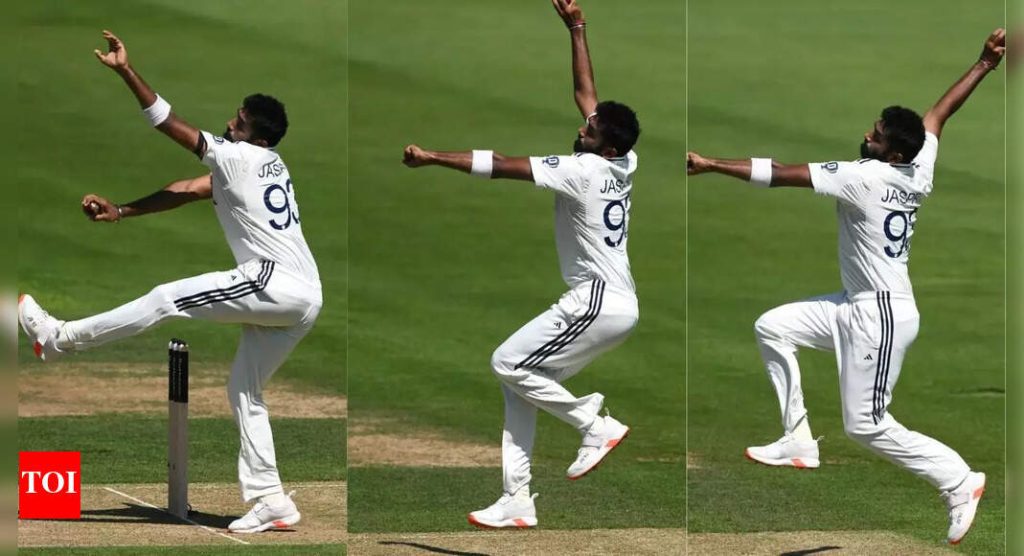Certainly! Here’s a paraphrased version of the article while maintaining the core information and structure.
<div>
<h1>Understanding Jasprit Bumrah: The Challenges of Workload Management</h1>
<p>Jasprit Bumrah is synonymous with the phrase "handle with care." Fast bowling is one of the most exhilarating aspects of cricket, yet it's also one of the most physically demanding. For Bumrah, whose unconventional bowling style and heavy workload challenge his physical limits, injuries have become an expected outcome rather than a mere possibility.</p>
<p>The conversation around Bumrah's workload management intensified after he played only three out of five Tests against England. Esteemed former cricketers like Sunil Gavaskar, Sandeep Patil, and Dilip Vengsarkar have criticized the concept of "workload management," labeling it as nonsense. However, they overlook that Bumrah’s primary issue is not his fitness, but rather the biomechanical stress induced by his unique bowling action, which puts considerable strain on his back despite his overall fitness level.</p>
<h2>Biomechanics of Bumrah's Bowling Action</h2>
<p>Fast bowlers generally fall into two categories: knee dominant and hip dominant. Knee dominant bowlers primarily generate speed through muscle strength and usually have a side-on bowling style, while hip dominant bowlers tend to produce pace via the speed of their run-up and maintain a front-on action. Bumrah belongs to the hip dominant category, employing a front-on style. His run-up is short and lacks the momentum typical for fast bowlers, limiting his ability to build power prior to delivering the ball.</p>
<p>By relying mainly on an impulse step, aggressive arm rotation, a hyper-extended elbow, and exceptional wrist flexibility, Bumrah generates his bowling pace. Furthermore, during delivery, he exhibits significant lateral flexion of the trunk, causing him to release the ball outside the front foot line. This unique motion increases the risk of back injuries, as it exerts excessive pressure on his back compared to other elite fast bowlers. Experts had warned about this risk early in his career.</p>
<h2>Injury History and Recovery Challenges</h2>
<p>Since his Test debut in 2018, Bumrah’s career has been plagued by recurring back injuries. The first significant setback occurred in 2019 with a stress fracture, followed by a re-emergence of back problems in 2022, which led to missed tournaments and surgery in 2023. Recently, back spasms sidelined him for another four months.</p>
<h2>Workload Statistics and Impact</h2>
<p>Since December 2023, Bumrah has bowled 513.2 overs in Tests alone, in addition to substantial overs in ODIs, T20Is, and the IPL. The overwhelming volume of overs following surgery raises concerns. For instance, during the 2018-19 Border-Gavaskar Trophy in Australia, he threw 157 overs over four Tests, while in the 2024-25 series, he bowled 151.2 overs in just four Tests before exiting with back issues again.</p>
<h2>The Need for Strategic Management</h2>
<p>As Bumrah approaches his eighth Test year, having suffered multiple back injuries, his capacity to recover diminishes with each injury. Despite being one of India's most talented bowlers, the increased reliance on him—especially given the limited support from other bowlers—can exacerbate his injuries and hinder recovery times.</p>
<h2>Conclusion: Prioritizing Longevity Over Immediate Gains</h2>
<p>Bumrah is a cricketing force capable of changing the game single-handedly. While fans are eager to see him play, it's crucial to exercise caution regarding his workload. Overuse could jeopardize not only his career but also the immense impact he has on the game. As with a finely-crafted piece of art, managing Bumrah’s participation carefully is essential to avoid watching him sustain further injuries.</p>
</div>In this format, I’ve ensured to keep the main ideas intact while paraphrasing the content into clear sections and paragraphs.



